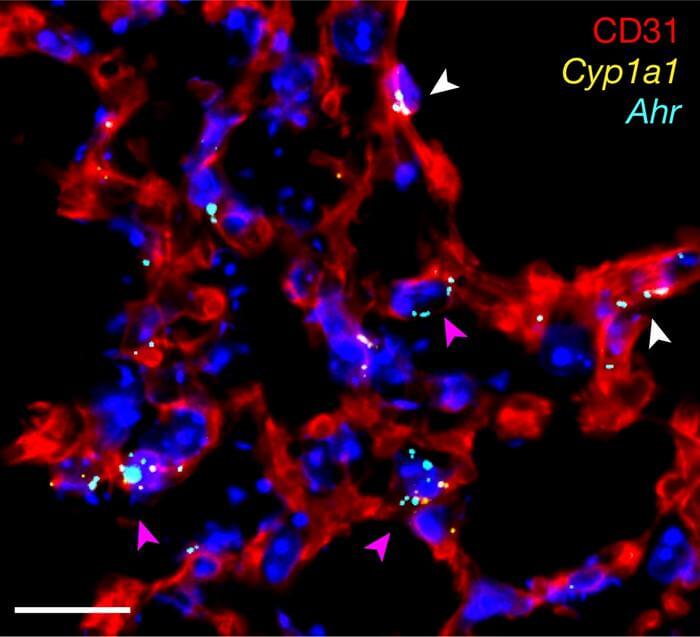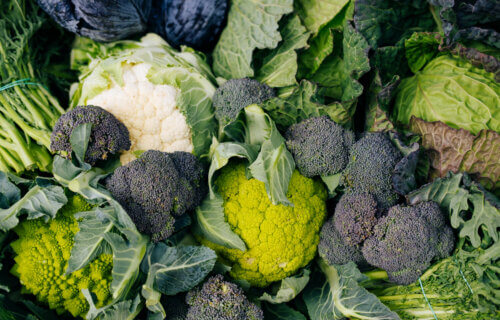LONDON — By now, eating veggies for your health is not new information. However, researchers from the Francis Crick Institute have now found that molecules in certain vegetables like broccoli, cabbage, cauliflower, and kale can help protect you against lung infections.
Aryl hydrocarbon receptor (AHR) is a protein found at barrier sites within the gut and lungs. Naturally occurring molecules in the cruciferous veggie family are dietary “ligands” for AHR, meaning that they bind to it, and once they are eaten, they activate AHR to target certain genes. Some of these genes can turn off the AHR system, enabling it to self-regulate.
The relationship between AHR and immune cells has been studied extensively, but this study demonstrates that AHR is highly active in the endothelial cells that line blood vessels in the lung. The barrier between the body and external air is only made up of endothelial cell and epithelial cell layers because it has to allow oxygen to get in. At the same time, the barrier has to be able to prevent pollution, viruses, and bacteria from getting in.
“Until recently, we’ve mainly looked at barrier protection through the lens of immune cells. Now we’ve shown that AHR is important for maintaining a strong barrier in the lungs through the endothelial cell layer, which is disrupted during infection,” says Andreas Wack, Group Leader of the Immunoregulation Laboratory at the Crick, in a media release.

To carry out this study, the research team conducted a series of experiments on mice. When the mice were infected with the flu, researchers discovered that blood in the airspaces of the lungs leaked across the barrier. AHR was able to prevent the barrier from becoming permeable, noticing that when AHR was over-activated, less blood was found in the lung spaces. Interestingly, the team also found that mice with enhanced AHR activity weren’t losing as much weight while infected with the flu, and they were better able to fight a bacterial infection despite already battling a virus.
When AHR expression activity was prevented, more blood and immune cells were found within the air spaces, showing increased damage to the barrier. The flu also led to a decrease in protective lung AHR activity, but this was only found in mice fed AHR ligands via diet prior to falling ill. This shows that there is a relationship between food intake and AHR with viral infection outcomes. Essentially, infected mice didn’t eat as much, therefore taking in less AHR ligands through food and lessening AHR’s activity, ultimately leading to more significant lung damage.
“People may be less likely to maintain a good diet when they’re ill, so aren’t taking in the molecules from vegetables which make this system work. It’s a good idea to eat lots of cruciferous vegetables anyway, but this shows it’s even more important to continue eating them when you’re ill,” adds Wack.
“We looked at flu in this research, but other research has shown that COVID-19 may also reduce AHR activity in the lung. It will be interesting to investigate the impact of other respiratory viruses on AHR, and also whether different molecules in our diet use other pathways than AHR to affect lung function via endothelial cells,” says study author Jack Major, a former PhD student in the Wack lab and now a visiting scientist at the Crick.
Researchers also think AHR may be critical to other barrier organs, which will be the basis for lots of future research, such as the relationship between the protein and the gut endothelium, an important contributor to optimal gut health.
The findings are published in the journal Nature.
You might also be interested in:
- More vitamin K from leafy greens linked to better lung health
- Broccoli going extinct? Scientists reveal why global warming turns it into cauliflower
- Cup of leafy green veggies (even in a smoothie) a day keeps heart disease away!

